The 14 Most Common Keyword Research Mistakes: Here’s How to Avoid Them
Georgi Todorov
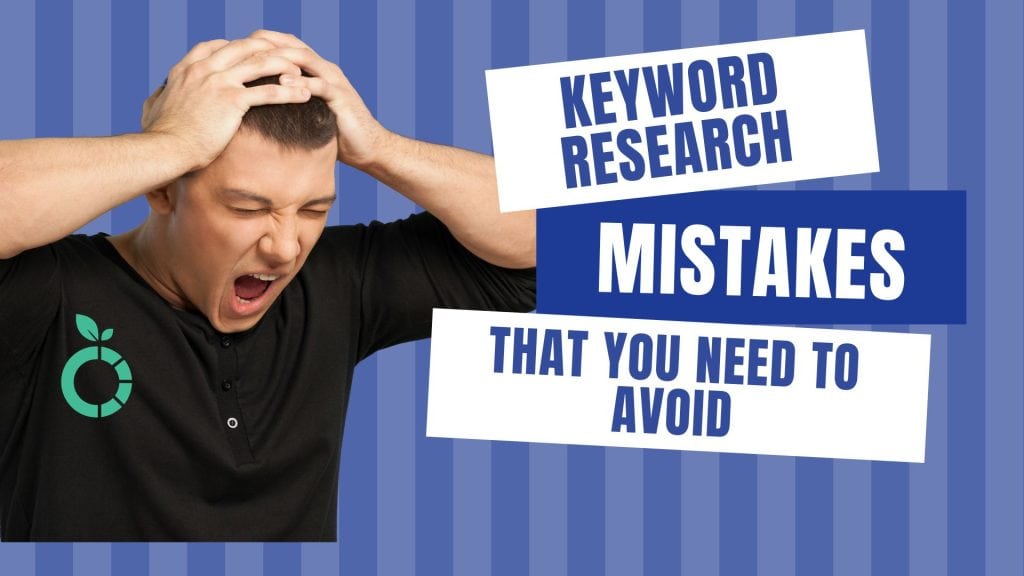
Keyword research is a complicated process that takes months, if not years, to master.
And it’s easy to make mistakes, especially as a beginner SEO. There are many pitfalls that a rookie can fall into.
In this article, we will go over the 14 most common keyword research mistakes that you should be looking to avoid.
We will also go over what you should be doing instead.
Mistake #1: Ignoring Search Intent by not looking at the SERPs
Not going after the correct content type
Some queries require an article. Other queries require a sales page. And some queries even require a category page.
Think of the keyword ”winter perfumes”. What kind of user intent does it have?
Even though it sounds like people might be interested in buying a perfume in winter, the SERPs show us otherwise:
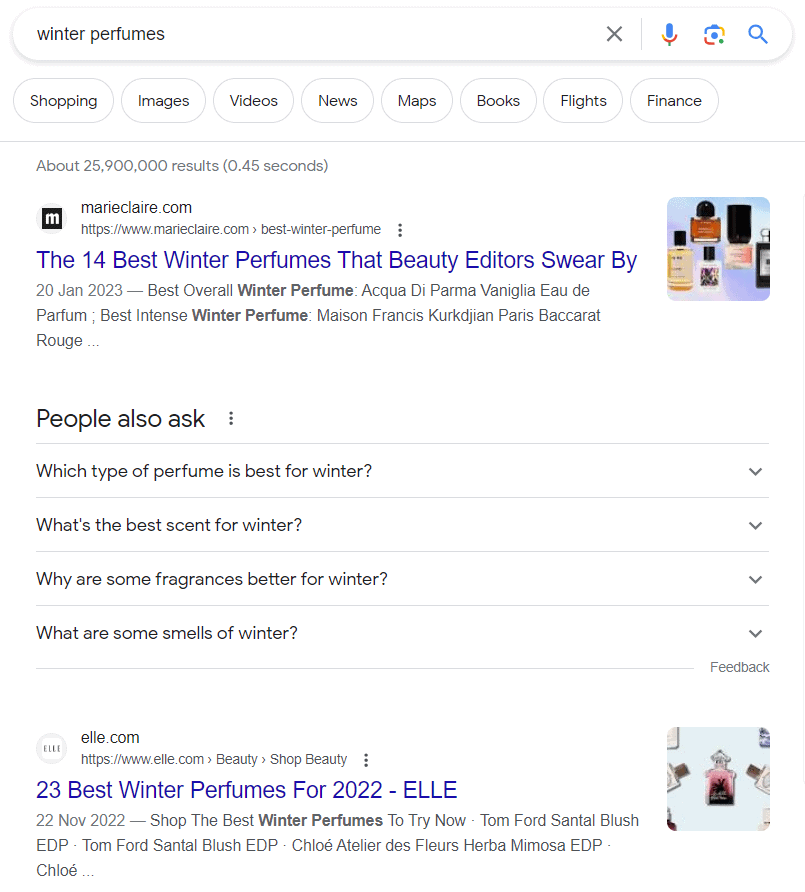
The correct content type for this query would be an article in a listicle format – outlining the different perfumes and then linking to sales pages.
Not double-checking if the keyword is a branded name
Some searches may be navigational, even if they don’t appear to be at first.
An example here with “Boots”, a brand in the UK:
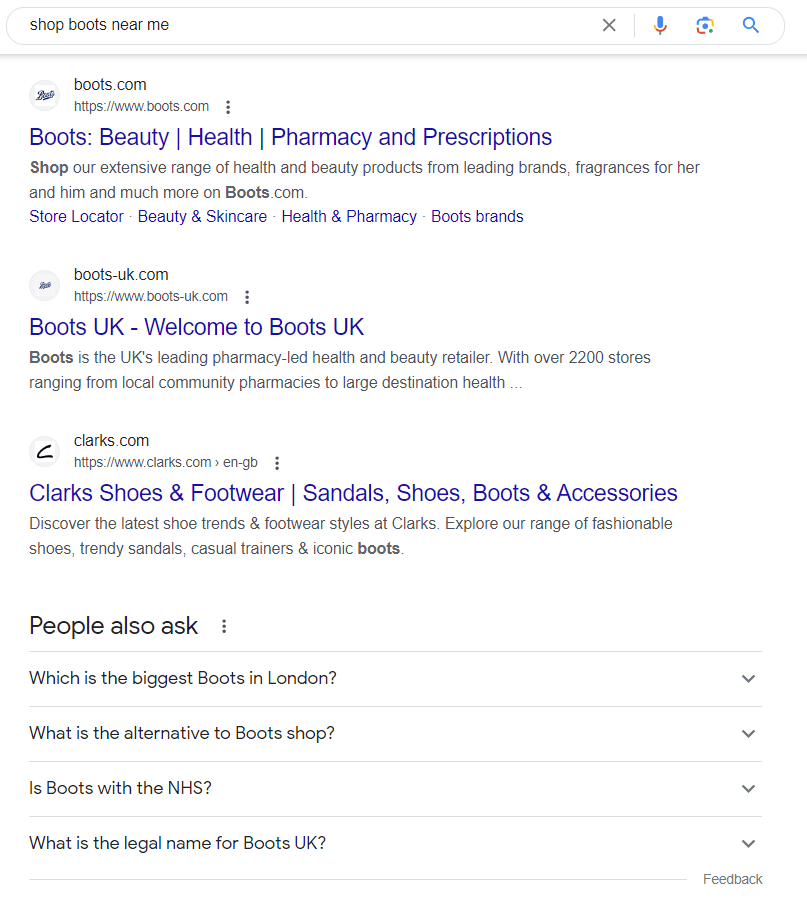
Not paying attention if a keyword is singular or plural
For some keywords, there is a big difference between their singular and plural form.
It might be the difference between transactional and commercial investigation intent, as we can see in the following example of searching for a software agency:

These 3 reasons are why you should be manually checking the SERPs while (or after) conducting keyword research.
You need to make sure that you are creating content that satisfies search intent.
Mistake #2: Blindly following ”keyword difficulty” as a key metric
SEO tools such as Semrush provide SEOs with the ”keyword difficulty” (KD) metric during the keyword research process to determine the difficulty of a keyword.
And even though it’s a good start, it’s not a metric that you should be basing your entire content strategy around.
Just because a keyword has a keyword difficulty of 15 does not mean that you can rank for it with your niche website.
You will need to analyze the SERPs and see who are your competitors, and how well they have covered the topic in order to determine if it’s really an ”easy” keyword.
Use LowFruits to extract the SERPs of your keywords to determine which keywords have weak domains ranking on the 1st page of Google.
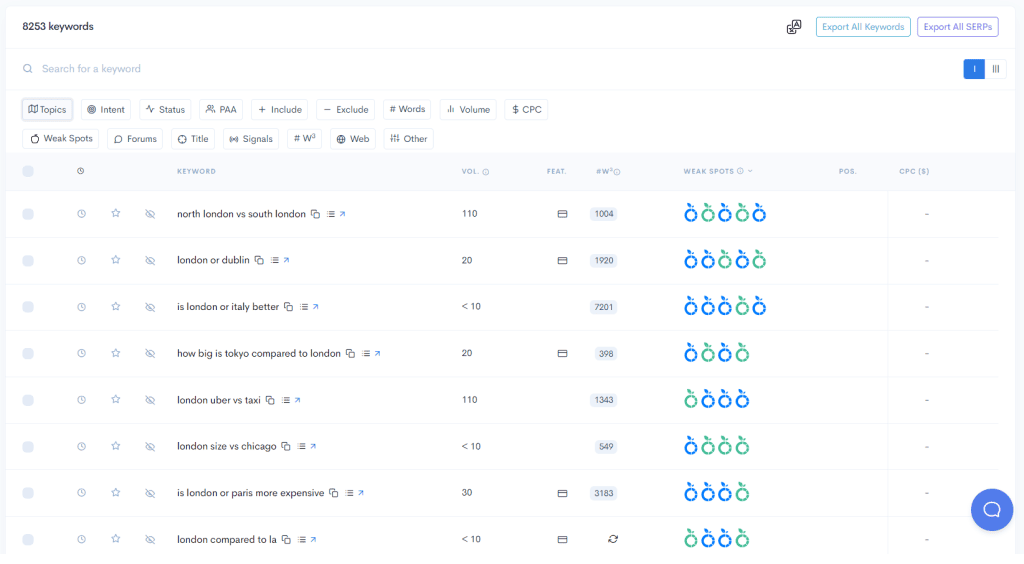
Mistake #3: Focusing only on high-volume keywords
High-volume keywords are naturally hard to rank for. This is because the whole industry is after them.
But if you are working on a website that has low domain authority, you should be opting for long-tail keywords that have weaker competition.
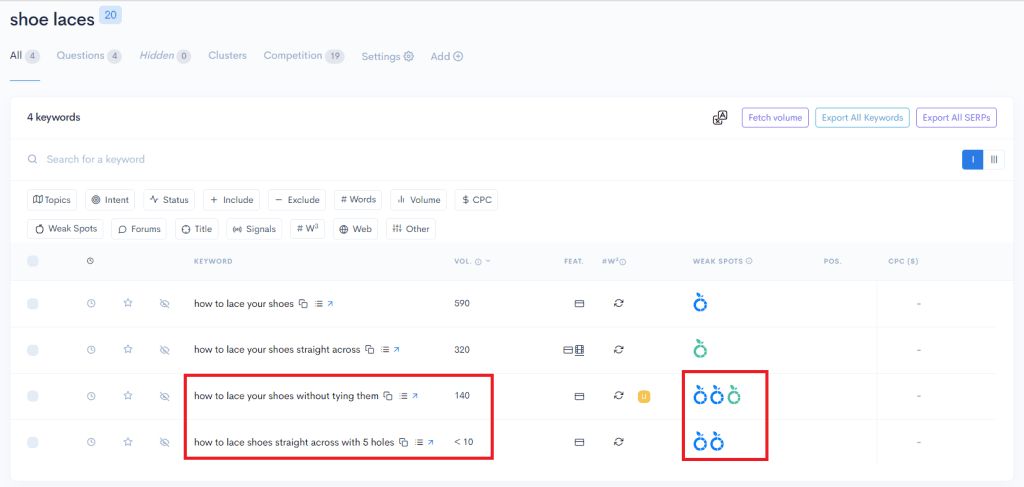
Mistake #4: Focusing only on info-intent keywords
Most websites tend to go after informational-intent keywords since it’s generally easier to produce content around them.
Info intent keywords also build authority in the industry, and you might get good traffic as a result.
But you are missing revenue on the table by not going after commercial investigation and transactional intent keywords:
- Commercial investigation keyword examples: ”accounting software reviews”; ”Monday alternative”
- Transactional keyword examples: ”buy perfume”; ”shoe wholesale”
These keywords should not be overlooked since they can produce revenue as people are more willing to convert.
Mistake #5: Not trying to avoid keyword cannibalization
When you are doing keyword research, you will often see semantically close keywords, such as:
- ”London vs. Paris”
- ”London or Paris”
The thing is, the search intent is the same. The SERP results are also the same.
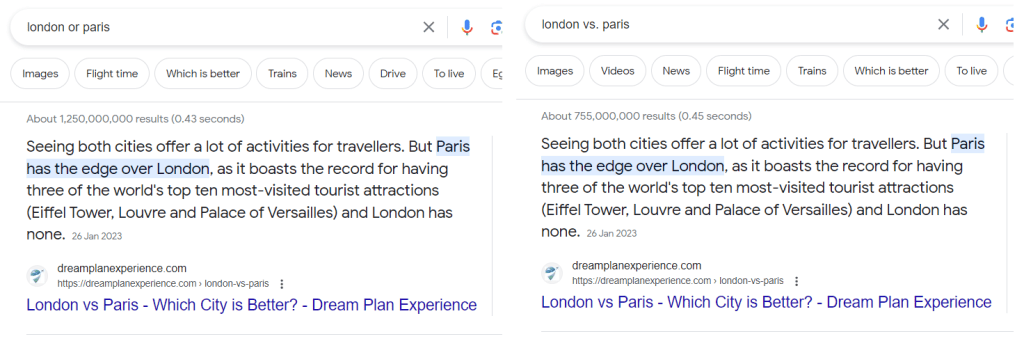
That means if you write 2 articles on these 2 keywords, they will cannibalize each other.
Keyword cannibalization is when you target the 2 same keywords with 2 different pages, and Google struggles to choose one.
To prevent that, you can use LowFruits’ SERP clustering tool in order to cluster keywords that have the same intent.
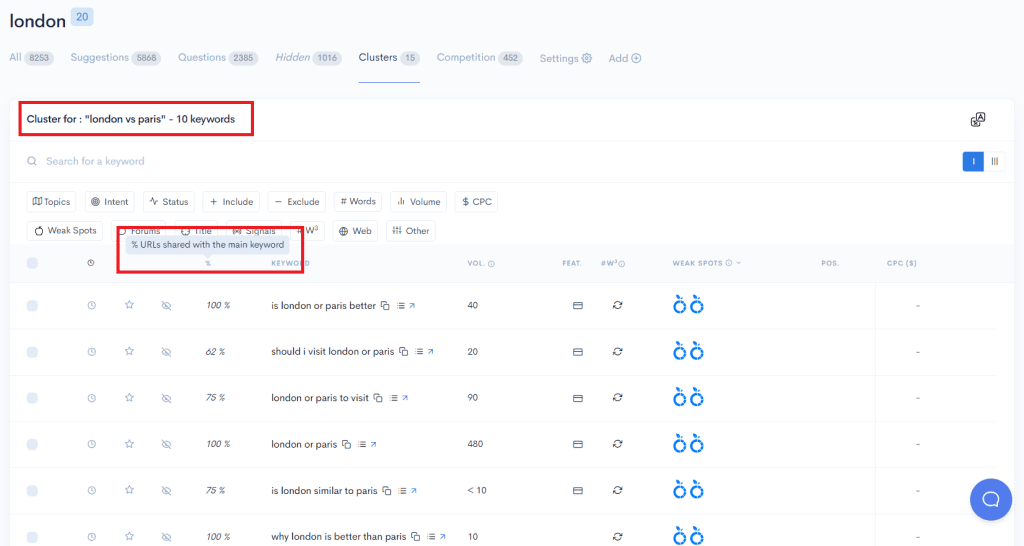
Mistake #6: Missing out on crucial seed keywords
Before starting keyword research, you should have a list of seed keywords based on how something can be said differently.
For example, some people say ”perfume”, but others say ”fragrance”.
Some people prefer to search for ”trip” and others for ”itinerary”.
If you are doing keyword research for a website that features plenty of products or services, you will need to be aware of all the ways people would search for them.
The problem with missing out on seed keywords is that there will be plenty of keywords that you will be missing out on.
Note: By enabling “Keyword broadening” in the advanced options of the KWFinder, your search will include related keywords. Read more about it here.
Mistake #7: Seeing keyword research as a keyword insertion exercise
The goal of keyword research is not to come up with a set of keywords that you can just insert into your existing content.
SEO is not just about adding as many new keywords as possible in an old post and hoping that it ranks.
The goal is to come up with new content ideas or to find areas of opportunities where it needs to be optimized (more on that later).
This is why keyword research is done before writing the topic in order to ensure that you have the correct title and keywords to use throughout your H structure and in your content.
Mistake #8: Not following up with topical research on the main keyword
Do not see your 500 keywords as 500 articles.
When you discover a content idea that you want to go after, that will be your main keyword.
But you also want to have secondary keywords and not just focus on the main keyword only.
This is why when you come up with a keyword, you want to go back and do additional research into long-tail keywords and semantically relevant keywords.
Let’s say that your main topic is ”how to clean shoe laces”. In order to build topical relevancy and answer the query in full, you need to include the following keywords:
- ”how to clean white shoe laces”
- ‘’can you clean shoe laces with dish soap”
That is usually done via the H2s throughout your content, where you can target these keywords as secondary.
Mistake #9: Lack of research into how your ideal customer persona searches for solutions
How the general public searches might be different from how your ideal customer persona searches for a solution.
Ask your customers how they would search for your solution, or how they would search to solve the problem. You can ask them in a survey.
It serves as a temperature check if you are on the right track and if you are missing on something.
I asked that question for one of the SaaS companies I worked for in a customer research survey and here are the results that we got:

Even though we got only a few proper responses, we still didn’t know that people could refer to our tool as ”storage tool” or ”directory tool”.
It also gave us the content idea ”How to save Slack messages without Premium”.
Mistake #10: Not looking at what keywords your competitors are targeting
You can use your competitors to gain keyword inspiration from them.
It can be in the form of keyword gap analysis (what keywords you are missing), or a competitor rankings analysis, where you can see what keywords they are ranking for.
To study your competitors you can use LowFruits’ Domain Explorer where you can find the winners of your industry.
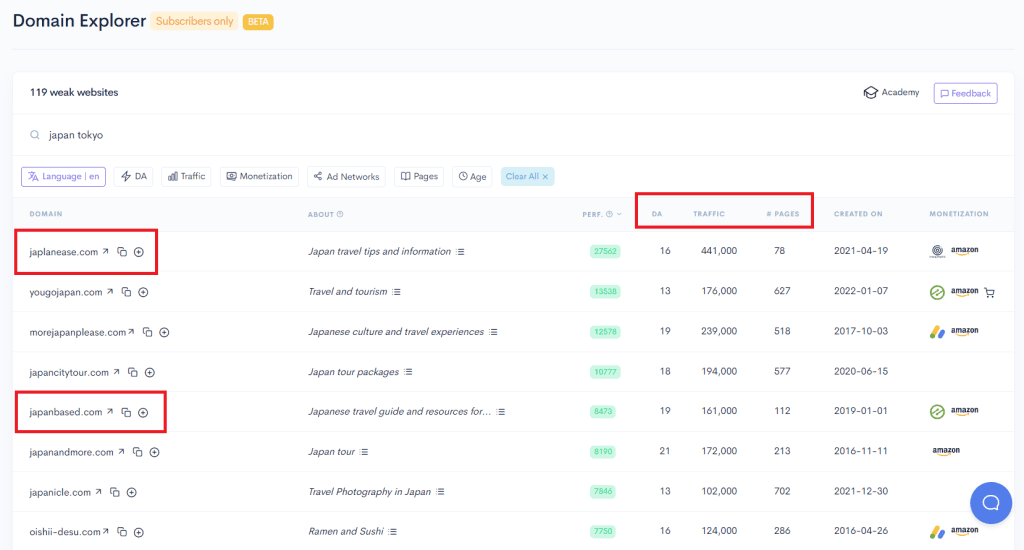
These will be the players that have low domain authority but have massive traffic.
After that, you can take their domains and extract their existing rankings in LowFruits’ Rankings Extractor.
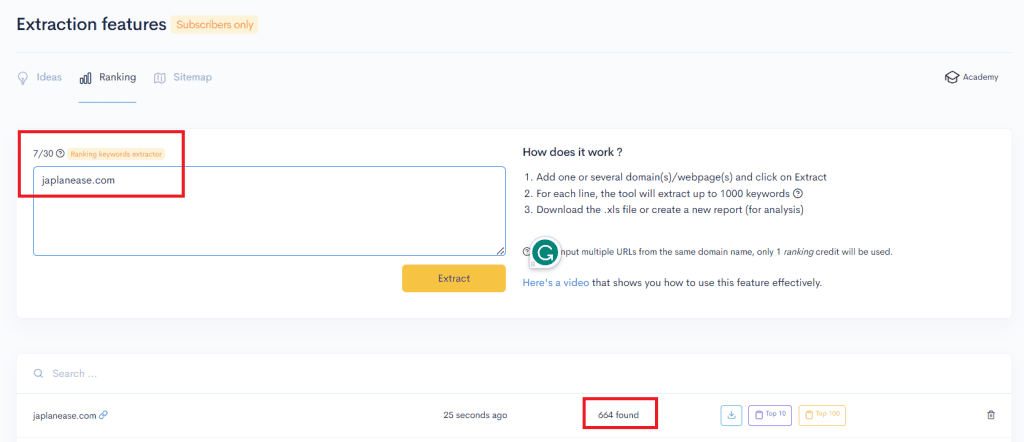
You can then steal the keywords that they are targeting to get their traffic.
Mistake #11: Analyzing the keywords of the wrong competitors
Your SERP competitors are different than your business competitors and SEOs need to make the difference.
For example, if you are an SEO agency, your SERP competitors are not JellyFish or Pattrns.
These may be your business competitors, but they are not ranking on Google for many keywords.
Your SERP competitors are Backlinko, Semrush, and even LowFruits’ Blog.
That means if you input your business competitors’ websites into a keyword gap analysis tool or LowFruits’ Rankings Extractor, you won’t get many keyword ideas.
Mistake #12: Seeing keyword research as new opportunities rather than optimizing existing content
Keyword research is not only about new keyword opportunities.
Use it to optimize your existing content.
One of the places to do it is Google Search Console where you can find keywords that you are already ranking for with some of your existing articles.
Then you can optimize for these keywords.
Optimization, in this case, could include:
- Adding a new section in the article
- Re-wording the title and meta description
- Re-wording the H structure
This is why when you are doing keyword research inside a tool like LowFruits, you need to input your domain so the tool can show you your current positions for these keywords.
That means you can determine which keywords will need to be optimized for, and which keywords need to be targeted in new content.
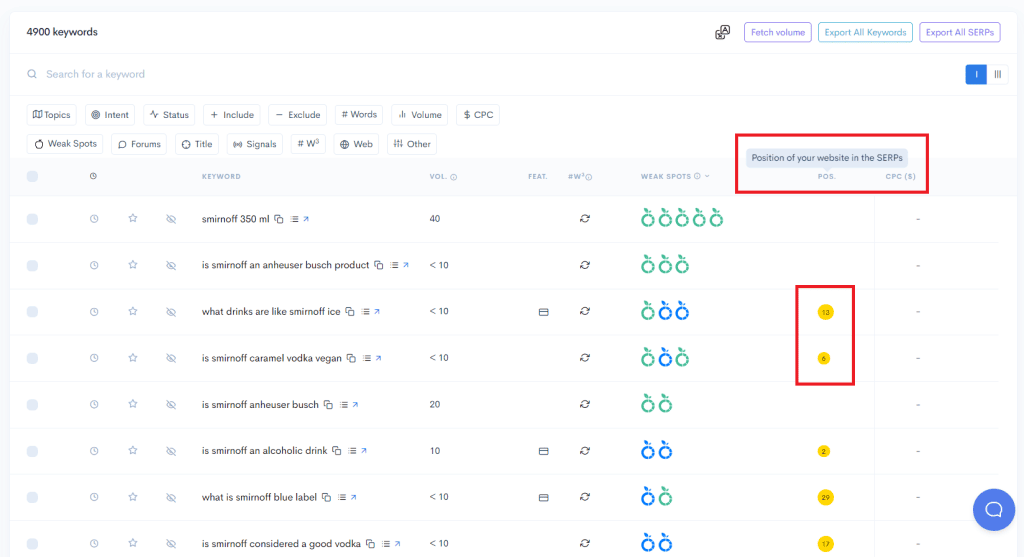
Mistake #13: Underestimating local search (keyword localization)
How people search in one region might be different than how they search in another.
The way people would search for something in English in the USA, GB, and Australia is different.
An example is what British people think of football (soccer for Americans) and how Americans think of football (American football, which is closer to rugby).
This is why if you go after ”football shoes”, you will need to be targeting the UK audience, and then target the US audience with ”soccer shoes”.
That can also happen in the same country where the language changes locally (e.g., Spanish and Catalan).
Mistake #14: Not targeting keywords that would be of interest to your ideal audience
You can be doing all of the other things correctly and have a solid keyword research methodology.
But you need to research keywords and write content for the people that you are trying to reach, which is your target audience.
If you are a software agency and you write an article ”beginner HTML guide” while targeting CTOs, it wouldn’t make sense.
That’s because they do not need it. They already know HTML, but they need an agency to outsource to or solve their problems.
Instead, you should be going after keywords such as ”best software agencies london” or ”pros and cons of outsourcing software development”.
This is the content that your target audience needs and reads.
Key Takeaways: Common Keyword Research Mistakes
- Check the SERPs to understand the search intent.
- Don’t base your entire content strategy on the keyword difficulty metric (KD).
- Use LowFruits to research the SERPs for your keywords to find weak spots.
- Do not only go after, hard to rank, high-volume keywords
- Do not only go after informational intent keywords, as you could target high-intent keywords for revenue.
- Target keywords that are of interest to your target audience.
- Do not write beginner content if you are trying to reach experts in the industry.
- Make sure to phrase the keywords the way your target audience phrases them.
- Study how keywords are phrased in different regions and countries.
- Study your competitors’ existing rankings to find easy keywords.
- Study your SERP competitors, not your business competitors.
- Keyword research is not only about finding new opportunities but also about optimizing existing rankings.
- Avoid keyword cannibalization by clustering the keywords with LowFruits’ SERP clustering tool.
- Research the different ways of phrasing a keyword to not miss seed keywords.